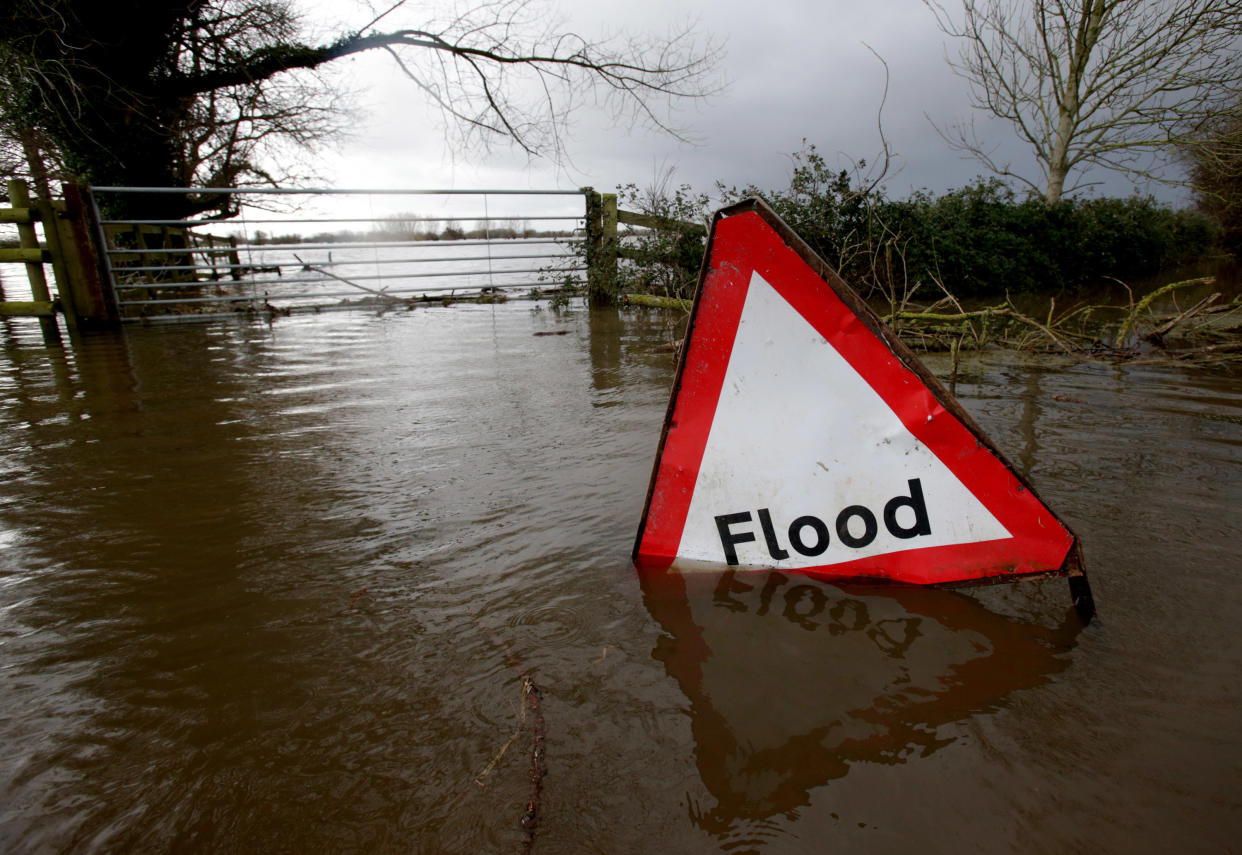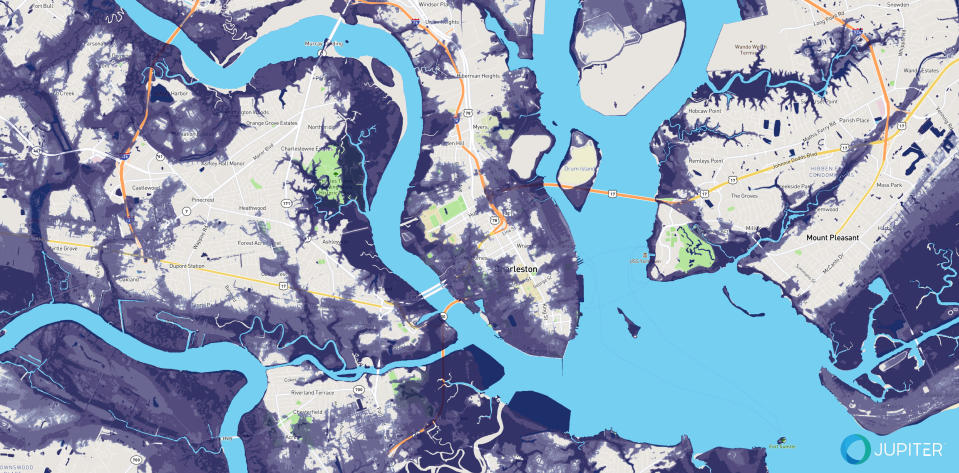A startup brings climate-change modeling down to the street level

As nations around the world awaken to the danger of climate change and seek protection from sea-level rise and extreme weather, planning agencies, fire departments and industries from real estate to insurance are looking for high-resolution data pinpointing the risks — down to specific street addresses.
These peril prediction models for flooding, wildfires, extreme heat, water security and similar threats could fundamentally change the way companies and governments plan for climate risks.
Rich Sorkin is the founder and CEO of Jupiter Intelligence, a startup delivering hyperlocal climate predictions using cloud computing. His team of scientists and engineers are at the forefront of catastrophic-risk modeling.
Sorkin, a Silicon Valley entrepreneur for the past three decades, cut his teeth on databases, advanced analytics and geographic information systems. He sold one company to HP, another to Google. He said the business side of the company is made up of more people like him: “classic capitalist entrepreneurs.” About two and a half years ago, they started to think about the needs of the private sector in responding to climate risks.
“Since then, there’s been a steady but dramatic increase in the actual losses that citizens and businesses experienced as well as the perceived increase in those losses in the future. Both are important,” Sorkin told Yahoo News.
Jupiter was started to address a particular problem: Most models for disaster risk are based on past events and do not take the changing climate into account. This makes it difficult for anyone in business or government to plan for the future.
Rob Moore, a senior policy analyst for the Natural Resources Defense Council, focuses on some of the bigger water risks associated with climate change. He said a major hurdle for addressing these problems is that the Federal Emergency Management Agency (FEMA) creates maps that are universally used by architects and engineers in the planning and construction of buildings. Panels tasked with monitoring flood zones also rely on these maps — but they are fundamentally flawed.
“None of them are created with any projection of future flood risks and how they are changing,” Moore told Yahoo News. “The maps are predicated on the assumption, as many of our disaster policies are, that the past is a perfect predictor of the future, and nothing can be further from the truth when dealing with climate change.”
Sorkin said Jupiter’s predictions are different from those of any other groups in the private or public sectors because they focus on the asset level.

“If it’s a house, it might be the garage and points of entry for a basement. If it’s a power plant, it’s the location of the most critical and exposed infrastructure. If it’s an industrial warehouse, it’s the points of vulnerability like the loading dock,” Sorkin said. “We look at the specific vulnerability for that specific asset and compare that to the risks over time from each of those individual perils.”
At its founding, Jupiter raised $10 million to build an interdisciplinary team of top climate scientists, weather modelers and software developers.
Julie Pullen, a research scientist at Columbia University’s Lamont-Doherty Earth Observatory and climate science adviser at the Brookhaven National Laboratory, signed on as Jupiter’s product director. She spoke to Yahoo News at the New York offices of Jupiter, which is headquartered in San Mateo, Calif., and has another office in Boulder, Colo.
“It’s unique to have a team of high-caliber scientists with expertise across so many components of the earth system. That combined with engineers and data scientists well-versed in the latest computing technologies and algorithms — and seasoned entrepreneurs and advisers with deep experience in this space — all create a dynamite environment for developing novel approaches and powerful solutions,” Pullen said.
At the Naval Research Laboratory, Pullen pioneered combining ocean and atmosphere models to improve calculations of resilience and sustainability in coastal environments. She was part of the National Academies committee behind the Fourth National Climate Assessment, which contained alarming predictions about the damage climate change will have on American infrastructure, public health and the economy. She also led the National Center for Maritime Security, which was funded by the Department of Homeland Security.

“Science has shown that ensemble techniques (running more than one model result) can lead to enhanced predictability by illuminating the range of possible outcomes. This is especially important looking out to longer time horizons, and allows for a quantification of uncertainty,” Pullen said.
Commercially, Jupiter’s six-month- to 50-plus-year flood prediction service at the asset level is available throughout the Atlantic coast today: It’s concentrated primarily in the New York metropolitan area, south Florida and the Carolinas, but it is steadily expanding. It intends to cover Houston soon and to have data on the top 100 global metropolitan areas within 18 months. Jupiter has a short-term service that offers one-hour to five-day flood predictions for use by emergency management and response officials.
Although any property owner could find Jupiter’s predictions valuable, the company mostly markets to insurance companies, the real estate industry and city governments. Sorkin said state governments and industries such as chemical manufacturing are expressing interest as well.
“We primarily sell to large enterprises. NOAA [the National Oceanic and Atmospheric Administration] asked us at one point whether we could help them with something that was consumer-facing or citizen-facing, and we said we’d be happy to do that,” Sorkin said, adding that he could imagine partnering with internet companies such as Google, Facebook or Zillow, “but we’re not currently set up as an individual consumer-facing service.”
Pullen said Jupiter’s customers include three of the top global insurance companies, some of the world’s largest mortgage firms, power companies, New York City, the U.S. government, Miami and a large U.S. state. “In addition to our existing work in flood, extreme heat and wind, we are already expanding into several additional perils, especially fire,” she said.
President Trump doubts the reality of climate change and has appointed climate skeptics and deniers to prominent places in the U.S. government with tremendous power over environmental policy. By and large, Democratic politicians are pushing for the government to prioritize protecting the environment and contributing to the global effort to reduce greenhouse gas emissions. Republican politicians, on the other hand, have largely been lobbying on behalf of industry, and many have fostered doubt in the scientific consensus.

There is contingent of Republican environmentalists who think entrepreneurship and free market forces are the answer to the climate crisis. Jupiter’s success shows that private industry is taking climate change seriously, and that there is a market for science-backed data about its dangers. It also provides a parallel structure, outside of government and universities, in which climate science can be pursued, without risking the ludicrous charge that it’s all a hoax perpetrated by a cabal of self-interested academics.
The company was named after the Roman god of storms and the sky and grew out of another company that was named after Zeus, his Greek equivalent. About 10 years ago, Zeus became one of the first companies in the world to run weather-prediction models in the cloud (the internet cloud, not the kind that makes rain). The company wanted to explore the new possibilities of high-performance computing with the benefit of the cloud but was a little early. Climate change was not taken seriously enough as a significant economic issue, and the technology wasn’t quite there yet.
Sorkin moved to a predictive analytics company that Google bought last year and another co-founder moved to a private satellite observation company called Skybox that Google bought four years ago and was then merged into Planet Labs. The scientific co-founder of Zeus went back to academia and continued his work on cloud computing with a grant from the National Science Foundation.
Sorkin said 30-day weather and one-year risk prediction is very well-covered ground but that there’s little research on forecasts beyond a year. But he said when his team began to focus on perils instead of weather, things started to gel.
“Fast-forward a little bit, we got more done with three people in the six weeks when we started Jupiter than we had in three years with a bigger team at Zeus because the underlying platform technology was so much more robust,” Sorkin said.
_____
Read more from Yahoo News:
2020 prospect Sen. Klobuchar: It’s ‘difficult to imagine’ voting for Trump AG pick
Despite denials, documents reveal U.S. training UAE forces for combat in Yemen
Ted Kennedy, Jimmy Carter and a lesson from history for President Trump
Mayor Pete to President Pete? It’s crazy, but he thinks his ideas aren’t.



